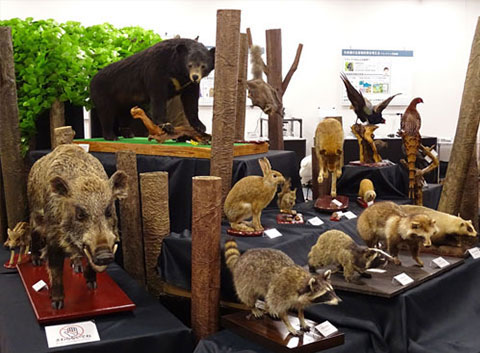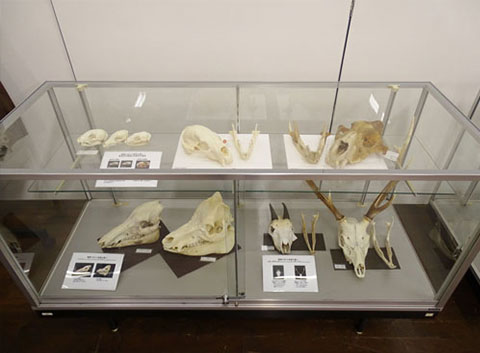
Veterinary Medical Teaching Hospital (VMTH) is an attached facility of Nippon Veterinary and Life Science University. It was established in the early 20th century, moved and rebuilt several times and the current hospital was built in 2003. The teaching hospital has three major objectives, such as practice, education and research. The clinical staff includes approximately 50 veterinarians, 10 veterinary nurses, 20 veterinary residents and some other specialists (receptionists, laboratory and pharmacy technologists). In addition, many graduate and undergraduate students join the practice through the year. We have 8 examination rooms, 3 operation rooms, 2 hospitalization rooms, one intensive care unit (ICU) and areas for electrocardiography, echography, computed tomography (CT), magnetic resonance imaging (MRI), endoscopy and radiotherapy. The hospital’s laboratory manages all kinds of clinical examinations, such as clinical chemistry, immunology and coagulation tests.
As for the clinical practice, the hospital provides support to benefit the community. We see approximately 10,000 cases (dogs and cats) per year, which are mostly referred cases from private practitioners. The hospital organization includes the departments of internal medicine, surgery, radiology, cardiology, pulmonology, gastroenterology, endocrinology, nephrology, dermatology, oncology, neurology, theriogenology and behavioral medicine. We make diagnoses on the animals which could hardly be diagnosed in private clinics and provide the highest level of medical and surgical cares to them.
As an educational hospital, students join the practice conducted by the university teaching staff. Through the practice, students belonging to the School of Veterinary Medicine and the School of Veterinary Nursing and Technology study together and acquire the means for team medicine. Veterinary students learn the diagnostic approach using physical examinations, blood tests, physiological tests and clinical imaging. Furthermore, they learn how to decide on courses of treatment based on diagnosis. In contrast, veterinary nursing students learn the nursing process, which includes the nursing diagnosis and the nursing intervention. They also join the examinations with veterinary students and come in with nursing cares to hospitalized animals. Foreign students from our overseas affiliated schools also attend at the practice for limited periods every year.
The hospital contributes to the veterinary research. The university staff collects the data of examined cases and publishes the epidemiological findings. We evaluate new diagnostic methods, such as blood, urine and fluid tests. And we also perform new treatment trials under the informed consents. The hospital as a research institute also has an important implication for graduate educations.

Veterinary Medical Teaching Hospital

Linear Accelerator
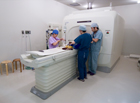
MRI

Surgery Room


On the outskirts of Mt. Fuji is our research farm that is located at 120 km from the Tokyo campus of Nippon Veterinary and Life Science University. The farm area consists of 6 hectares complete with a stall barn, feedlots, stables, pasture areas, composting systems and two lodging facilities. Dairy and beef cattle, sheep, goats, horses and dogs are kept in the farm and university staff manages the farm equipment and administers daily chores. The research farm proposes four principles, i.e., education, research, food production and contribution to society.
The research farm provides opportunities for students to study the food animal husbandry and practice dairy operation. The stall barn is equipped with automatic feeders, milkers and a milk processing unit. We keep dairy cows and pump milk every day, in which, the students engage. Two lodging facilities (Fuji seminar house and Bokushin seminar house) have meeting halls, kitchens, bathrooms and bedrooms, which accommodate more than 100 people, so the students can stay in the farm for a couple of days. During their stay, veterinary students and veterinary nursing students study the handling techniques and medical procedures for large animals to achieve their skills as veterinary specialists. Animal and food science students learn food engineering and food-safety administration in addition to the animal handling.
The laboratory for energy metabolism is operating in the research farm. Through the biochemical and genomic analyses, laboratory staff studies a variety of topics pertinent to animal metabolism, especially those in ruminants, which are major food animals in the human life. The research members are consists of university professors, graduate students and undergraduate students. Main research subjects are to reveal the metabolic machinery and disorders in dairy cows at the genetic level and to establish a prevention system of production diseases in beef cattle.
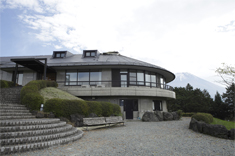
Fuji Seminar House

Milking Cow Shed
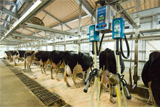
Milking Machine



The Wildlife Museum was established in 2015 as the university museum of NVLU (Nippon Veterinary and Life Science University). This museum aims to publicly exhibit the achievements of its academic pursuits and to also serve as an institution of learning. The facility of museum was established in 1909 as Azabu ward office, Tokyo city. In 1930s, this building was relocated at present campus.
The Museum is divided into two departments, each having a distinct origin. The Historical Department exhibits the history of NVLU and veterinary medicine in Japan. The Nature Department exhibits mainly the issues of interactions human and wild animals. At present, the museum staff consists of the director (professor) and one curator (MS). The Museum is open to the public for a limited time. The open periods will be notice with web site in NVLU.
NVLU has established the Curatorial Training Program, based on zoo and wild animal science, and offers courses related to museums and trains students to acquire a wide range of curatorial and academic knowledge, as well as practical skills in this museum. Students who have successfully completed all the required courses will be awarded, at the time of graduation, a certificate indicating the fulfillment of the credits necessary for the completion of this program.

The Historical Department

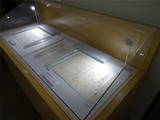
The Nature Department
